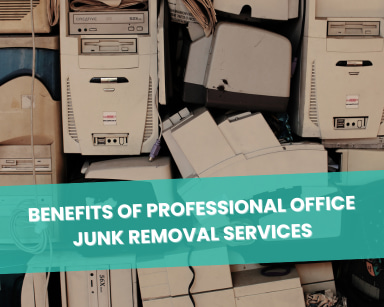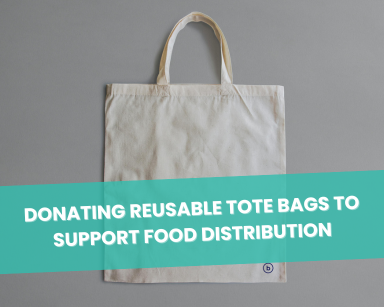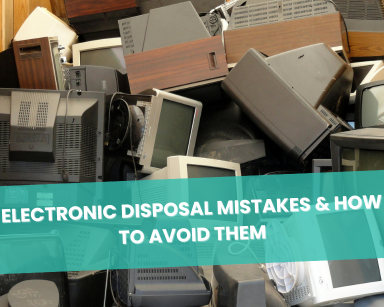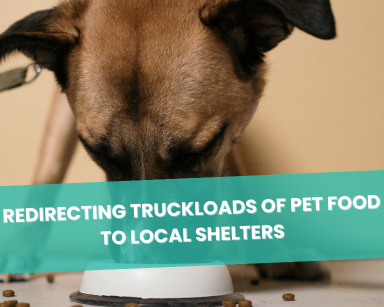How Beneficial Reuse Cuts CO2 Emissions & Promote Sustainability
Reducing CO2 emissions is critical for a sustainable future. Landfills, major contributors to greenhouse gases, release significant methane, a gas much more potent than CO2.
The transportation of waste to landfills and recycling centers further adds to CO2 emissions.
Traditional recycling, while beneficial, often involves energy-intensive processes that emit CO2, and only a small percentage of recyclable materials actually get recycled.
Beneficial reuse initiatives provide an effective solution by diverting reusable products from landfills. This not only cuts down methane emissions but also reduces the CO2 footprint from waste transportation and recycling.
Table of Contents
Landfills: More Than Just a Space Issue
Landfills are often seen as simple waste disposal sites, but their environmental impact is far more significant.
When organic waste decomposes in landfills, it produces methane, a greenhouse gas that is over 25 times more potent than carbon dioxide in trapping heat in the atmosphere. This methane release is a major contributor to global warming.
Moreover, the decomposition process generates leachate, a toxic liquid that can contaminate soil and groundwater, posing serious health risks. Landfills also attract pests and generate unpleasant odors, affecting nearby communities.
The World Health Organization projects that heat exposure caused by increased temperatures will be the largest health impact of climate change.
The sheer volume of waste in landfills can also lead to physical instability and potential hazards. Addressing these issues requires a comprehensive approach to waste management and reduction.
The Overlooked Emissions from Waste Transport
Transporting waste to landfills and recycling centers contributes significantly to CO2 emissions. Heavy-duty trucks, which are essential for waste transport, are responsible for nearly a quarter of road transport emissions.
A single garbage truck can emit approximately 1.3 kilograms of CO2 per mile traveled. Considering the frequent trips required to manage urban waste, these emissions quickly accumulate.
For instance, transporting waste across a large metropolitan area can result in hundreds of tons of CO2 emissions annually.
Moreover, the continuous operation of these trucks not only increases carbon footprints but also exacerbates air pollution, impacting urban air quality and public health.
Addressing these overlooked emissions is crucial for effective CO2 reduction in waste management practices.
Recycling Isn’t as Green as You Think
Let’s see into why recycling processes can actually be quite energy-intensive and contribute to CO2 emissions:
- High Energy Use: Recycling operations, like melting metals or repulping paper, require a lot of energy. This energy often comes from burning fossil fuels, leading to CO2 emissions. For example, while recycling aluminum uses less energy than producing new aluminum, it still consumes a significant amount of electricity.
- Emissions from Transport: Recyclable materials must be transported to processing facilities, which can be far away. The trucks used for this transport run on diesel, adding more CO2 emissions during their journeys.
- Sorting & Cleaning: Preparing recyclables involves sorting and cleaning, which are both energy-intensive processes. Contaminated items require more energy to clean, increasing the overall carbon footprint of recycling.
- Inefficient Recycling Rates: Not all collected recyclables are actually recycled. Contamination and sorting issues mean that a lot of recyclable material ends up in landfills anyway, contributing to CO2 emissions from both the landfill and the attempted recycling process.
These factors show that while recycling is beneficial, it is not without its environmental costs.
How Beneficial Reuse Makes a Difference
Beneficial reuse programs give a second life to products that would otherwise end up in landfills. Instead of discarding these items, we find new uses for them, significantly reducing waste.
Here’s how beneficial reuse programs help keep items out of landfills & reduce emissions.
- Identify Surplus Inventory: Evaluate and catalog surplus or obsolete items that are still usable but would otherwise be discarded.
- Match with Needs: Connect these items with communities or organizations that need them, ensuring they are put to good use.
- Transport Efficiently: Coordinate the logistics of picking up and delivering the goods to their new destinations, minimizing transportation emissions by optimizing routes.
- Reduce Waste: Divert these goods from landfills, reducing methane emissions from decomposition.
- Cut Production Emissions: By reusing items, decrease the need for manufacturing new products, which further lowers CO2 emissions.
The Real Impact: Numbers That Matter
Beneficial reuse programs have demonstrated significant environmental benefits.
- By diverting over 50,000 truckloads of merchandise from landfills, Happen Ventures has saved more than 300,000 miles of transportation, resulting in substantial CO2 emission reductions.
- Businesses participating in beneficial reuse programs can receive tax write-offs up to 50% of their total donations, translating into millions of dollars in savings annually.
- Companies that adopt beneficial reuse practices often see improvements in their Environmental, Social, and Governance (ESG) scores due to their commitment to sustainability and social responsibility.
Making a Bigger Impact with Beneficial Reuse
Imagine the profound impact if more businesses & communities embraced beneficial reuse. By repurposing products destined for landfills, we can significantly cut CO2 emissions linked to waste decomposition and the manufacturing of new goods.
This is about optimizing resources & creating a more efficient, circular economy. Communities gain access to valuable resources that would otherwise go to waste, enhancing local support systems and sustainability efforts.
On a larger scale, the collective adoption of beneficial reuse practices could lead to measurable reductions in global greenhouse gas emissions. This cooperative approach not only drives substantial environmental improvements but also fosters economic and social resilience, making a tangible difference for future generations.
Why Beneficial Reuse is the Way Forward
Beneficial reuse is pivotal for reducing CO2 emissions and fostering sustainability. By diverting usable products from landfills, we significantly cut methane emissions and reduce the need for new manufacturing, saving energy and lowering CO2 output.
This approach not only conserves resources but also offers substantial economic benefits, such as saving up to 50% on disposal costs and gaining tax incentives.
It enhances corporate sustainability, improving ESG scores & boosting reputations.
On a community level, beneficial reuse provides essential goods to those in need, turning waste into valuable resources and promoting a circular economy.
Adopting beneficial reuse drives positive environmental, economic, and social impacts, making it a key strategy for a sustainable future.










